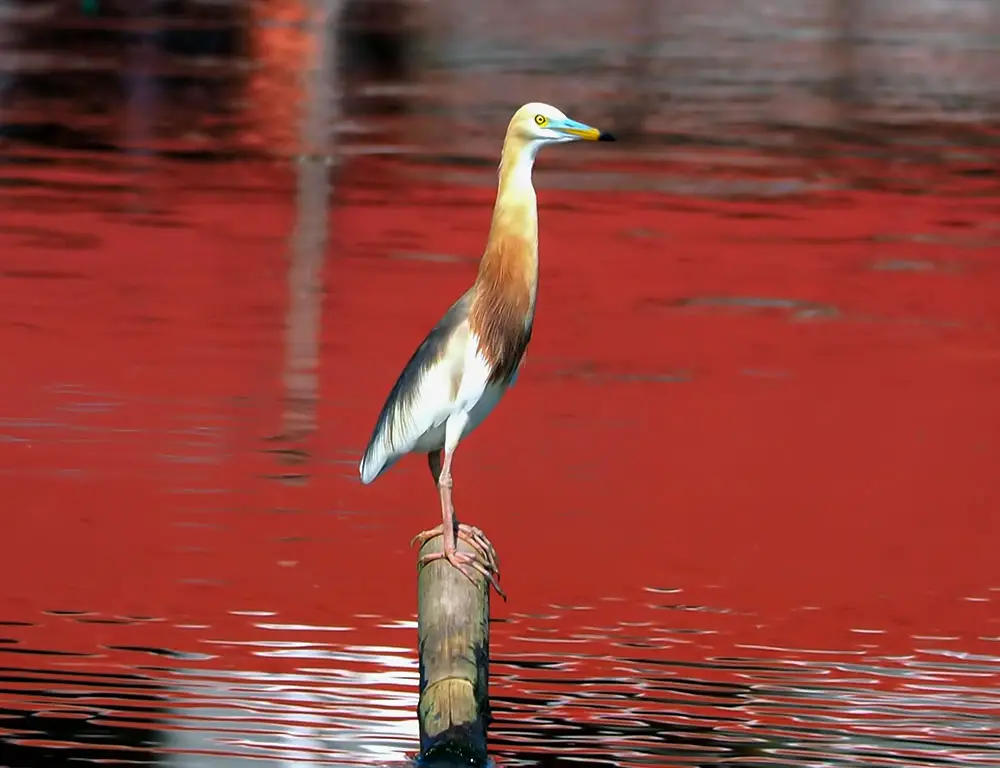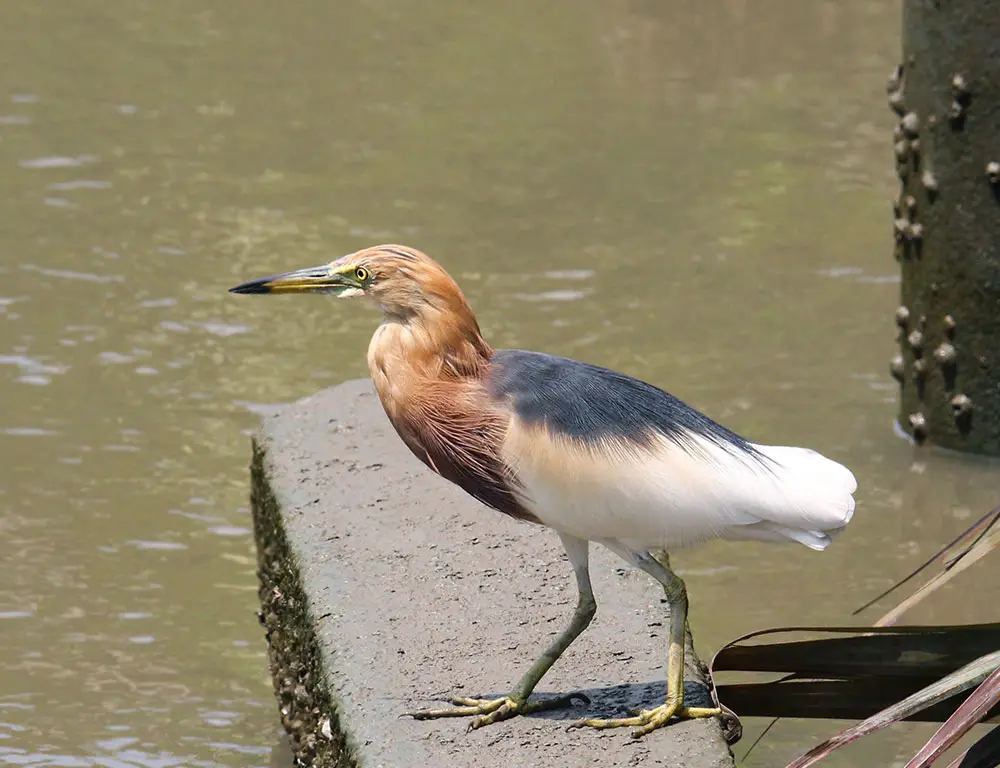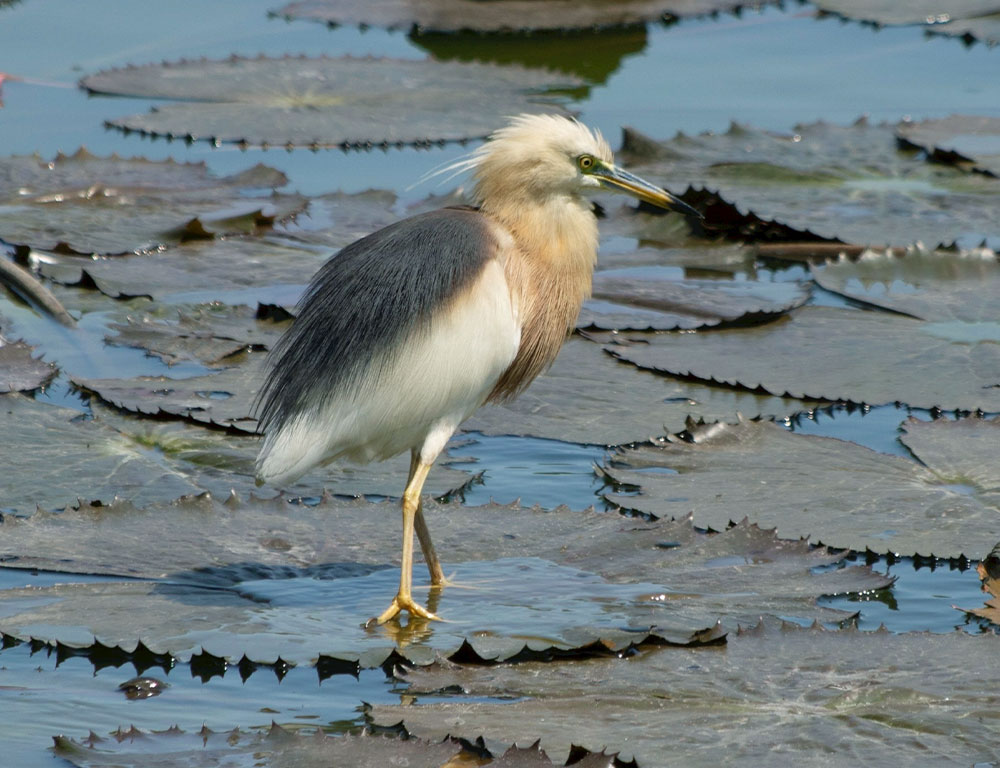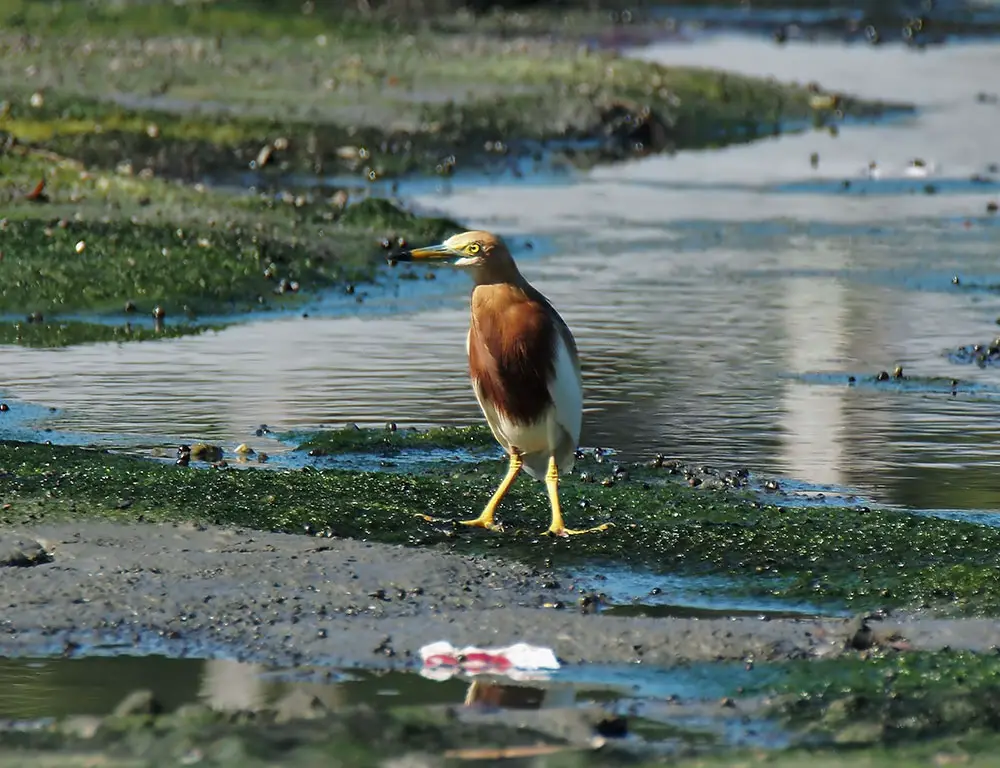I’ve always been intrigued by our planet’s rich biodiversity, and one of my favorite creatures to observe is the Javan Pond Heron. This remarkable bird, native to Southeast Asia, is a sight with its distinctive plumage and captivating behavior.
Known scientifically as Ardeola speciosa, this medium-sized heron belongs to the Ardeidae family. What’s fascinating about it?
It undergoes a dramatic transformation during breeding season – from an unassuming bird with streaky brown feathers to a stunning creature adorned in white and carrying an impressive mane.
The Javan Pond Heron embodies nature’s splendid adaptability and diversity. However, like many other species today, it’s facing challenges due to habitat loss and human activities. But don’t worry! We’ll delve more deeply into these topics later on in this article.

Physical Characteristics of the Javan Pond Heron
Let’s dive straight into the physical characteristics of this fascinating bird, the Javan Pond Heron.
Plumage
One of the most captivating features of a Javan Pond Heron is its plumage. In the non-breeding season, it’s adorned with a relatively unassuming combination of brown and white feathers, which allow it to blend seamlessly into its marshy surroundings.
However, things get a bit more exciting when the breeding season rolls around. The heron transforms itself with an explosive display of buff-orange plumage on the head, neck, and breast area.
What’s more? Its back turns into an eye-catching shade of slate-gray contrasting beautifully against its stark white underparts.
Size
As for size, let me tell you – Javan Pond Herons aren’t precisely what you’d call big birds. They measure anywhere from 45 to 50 cm in length – about as long as a standard ruler (and then some!).
To put things in perspective:
| Bird | Length (in cm) |
|---|---|
| Sparrow | 16 |
| American Robin | 25 |
| Javan Pond Heron | 45-50 |
These birds might not be giants, but they can certainly hold their own!
Morphology
Now, let’s talk morphology – or, in simpler terms, body structure. These herons exhibit all classic traits of wading birds: long legs designed for trudging through shallow waters and broad wings built for steady flight.
Their bills are sharp and pointed – perfect for nabbing small fish or insects from water surfaces!
A few noteworthy morphological features include:
- A short tail that balances out their long neck
- Stronger leg muscles allow them to stand still for hours
- Web-less feet suited ideally for muddy grounds
And there we have it! A deeper look at what makes up the physicality of our feathered friend, the Javan Pond Heron.
Habitat and Distribution of the Javan Pond Heron

Let’s delve into the world of the Javan Pond Heron, specifically its habitat and distribution.
Breeding Range
The breeding range is one fascinating aspect of this bird’s life cycle. Native to Southeast Asia, you’ll typically find these birds in countries like Indonesia, Thailand, Cambodia, Vietnam, and Malaysia during their breeding season.
They prefer locations with a mix of wetlands for feeding and trees for nesting.
| Country | Status |
|---|---|
| Indonesia | Native |
| Thailand | Native |
| Cambodia | Native |
| Vietnam | Native |
| Malaysia | Native |
Wintering Range
However, that’s a whole different story when it comes to wintering range. These herons go on a journey – they migrate southwards to warmer regions such as Australia and New Zealand.
I’ve often marveled at their resilience and adaptability in undertaking such long migrations yearly!
Preferred Habitats
Now, let’s talk about where you will most likely spot a Javan Pond Heron.
While they love wetland areas like marshes and rice fields for feeding purposes due to the rich availability of fish and insects, don’t be surprised if you see them strolling around in open grasslands or even urban parks! It seems that adaptability is indeed their strong suit.
- Wetlands (marshes)
- Rice fields
- Grasslands
- Urban parks
In summary (without drawing any conclusions), the Javan Pond Heron shows an impressive range in geography and habitat preferences.
The next time you’re out bird-watching in Southeast Asia or south in Australia/New Zealand during winter, keep your eyes peeled for this versatile creature!
Behavior of the Javan Pond Heron

Digging into the Javan Pond Heron’s behavior, let’s explore their feeding habits first.
Feeding
The Javan Pond Heron is quite a sight when it comes to mealtime. They’re often found wading through shallow waters or muddy fields; eyes keenly trained on the water below. With a swift jab of their sharp beak, they snatch up unsuspecting fish and crustaceans.
Unlike some other herons who prefer to hunt alone, these birds don’t mind sharing their dining space with others of their kind.
| Favorite Food | Hunting Time |
|---|---|
| Fish | Day |
| Crustaceans | Night |
Now that we’ve discussed what they eat and when, let’s move on to something a bit more romantic – courtship.
Courtship
When spring rolls around and love is in the air for these birdies, you’ll notice a significant change in their appearance. The typically unassuming brown feathers transform into brilliant white plumes streaked with gold – nature’s way of saying, “I’m single!”.
The males begin an elaborate dance involving stretching their necks high and fluffing out those newly sprouted golden feathers. If he catches the eye of a lovely lady heron, she’ll join him in his courtship dance before they settle down together.
And finally, a discussion about bird behavior would only be complete by touching upon migration patterns.
Migration
Contrary to popular belief, not all birds head south for the winter! The Javan Pond Heron is one example, as it prefers staying close to home all year round.
These birds are mainly sedentary but exhibit some local movements in response to weather or changes in food availability.
- It mostly stays within Java Island.
- Some movement based on weather changes
- Minimal long-distance migration
Their behavior shows how fascinating these creatures are – from unique feeding practices to elaborate courtship dances and unique migration patterns. There is still so much to learn about the Javan Pond Heron.
Conservation Status of the Javan Pond Heron

According to the International Union for Conservation of Nature (IUCN), the Javan Pond Heron is currently classified as “Least Concern,” indicating that the species is not facing an immediate risk of extinction. However, this classification doesn’t imply any concerns regarding their conservation status.
The population trend of the Javan Pond Heron is uncertain due to a lack of comprehensive data on their exact numbers.
While they have a broad range and are relatively common within their habitats, they encounter various challenges, primarily stemming from human activities such as habitat loss or degradation, including farming and urbanization.
Conservation efforts are underway to address these challenges and ensure the species’ continued survival. These efforts include:
- Regular monitoring of bird populations: Continuous monitoring helps assess population trends and identify any significant changes that may require conservation intervention.
- Establishment and management of protected areas: Protecting and effectively managing wetland habitats through designated protected areas can provide crucial refuges for the Javan Pond Heron and other species dependent on these ecosystems.
- Promoting sustainable agricultural practices: Encouraging and implementing sustainable farming practices can help minimize habitat destruction and reduce negative impacts on wetland ecosystems, benefiting the Javan Pond Heron and other wildlife.
Conclusion
After diving deep into the world of the Javan Pond Heron, I’ve come to appreciate this unique bird’s contribution to our ecosystem.
With their distinctive breeding plumage and fascinating behavior patterns, it’s clear that these herons hold a special place within Indonesia’s rich biodiversity.
We can learn a lot from how this bird adapts to different environments. They’re found in freshwater wetlands and coastal areas, demonstrating their impressive adaptability.
It shows us that even species with specific habitats have the potential for versatility when necessary.
In my research on their dietary habits, it was interesting to find how they contribute to controlling insect populations. This is not just beneficial for maintaining ecological balance but also aids in pest control:
| Food Source | Impact |
|---|---|
| Insects | Pest Control |
| Fish | Balance Aquatic Ecosystem |
It’s essential, however, not to overlook the threats facing these birds:
- Loss of wetland habitats due to urbanization
- Disturbance by human activities
- Climate change impacting migration patterns
These challenges underscore why conservation efforts are crucial for safeguarding the future of Javan Pond Herons.
But let’s end on a positive note! These birds are indeed an asset worth protecting. By understanding them better, we’re taking steps towards preserving our planet’s incredible biodiversity. And isn’t that what it’s all about?
So next time you see a Javan Pond Heron – or any other wildlife for that matter – take a moment to appreciate its role in our shared world.